Margarita Island, a beautiful island located in the Caribbean Sea, is home to a diverse range of bird species. The island’s lush tropical forests, stunning beaches, and mangrove swamps provide the perfect breeding grounds for a variety of both resident and migratory bird species.
Boasting over 220 bird species, Margarita Island is an ideal destination for any avid birdwatcher or nature enthusiast. Some of the island’s most iconic bird species include the Brown Pelican, Magnificent Frigatebird, American Flamingo, and Blue-crowned Parakeet.
From the lively chirping of the Bananaquit to the graceful soaring of the Osprey, Margarita Island is truly a birding paradise.
1. Tropical Mockingbird
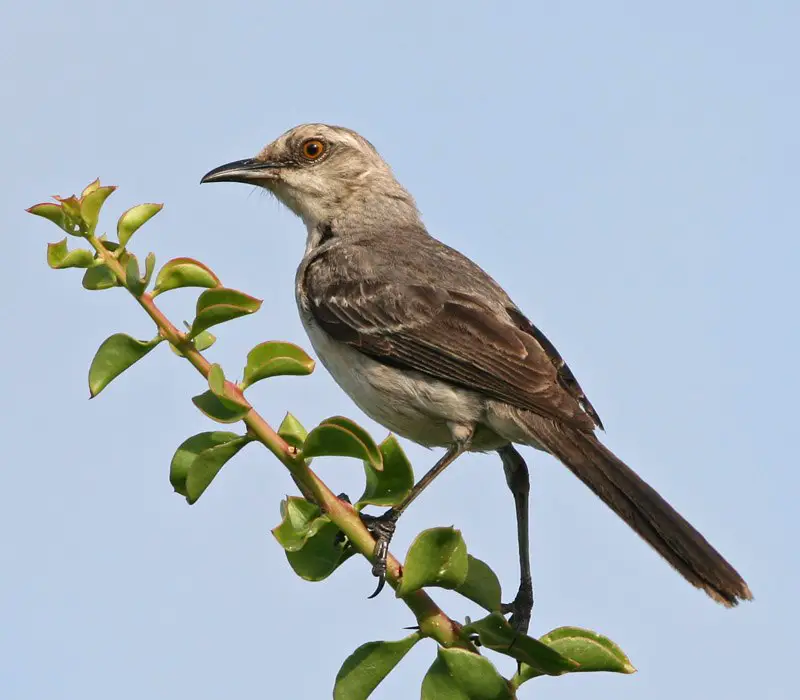
The Tropical mockingbird is a species of bird found throughout Central America and the Caribbean. It has been classified as a resident breeding bird, with its range stretching from southern Mexico to northern and eastern South America.
This species is closely related to the Northern Mockingbird, forming what is known as a superspecies between them both.
The Tropical mockingbird can be recognized by its grey-brown coloration on top, blending into white underparts which are highlighted by black spots along their throat and wings.
They have long legs for perching in trees or shrubs while searching for prey such as insects before singing out melodic songs during territorial disputes with other birds in the area.
Sadly, one subspecies -the San Cristobal Mockingbird – has been listed as critically endangered due to habitat destruction caused by human activities including logging within their natural environment.Scientific classification:
| Kingdom | Animalia |
| Phylum | Chordata |
| Class | Aves |
| Order | Passeriformes |
| Family | Mimidae |
| Genus | Mimus |
| Species | M. gilvus |
Also Featured In: Common Birds in Colombia, Most Common Birds in South America Birds
2. Red-Crowned Woodpecker
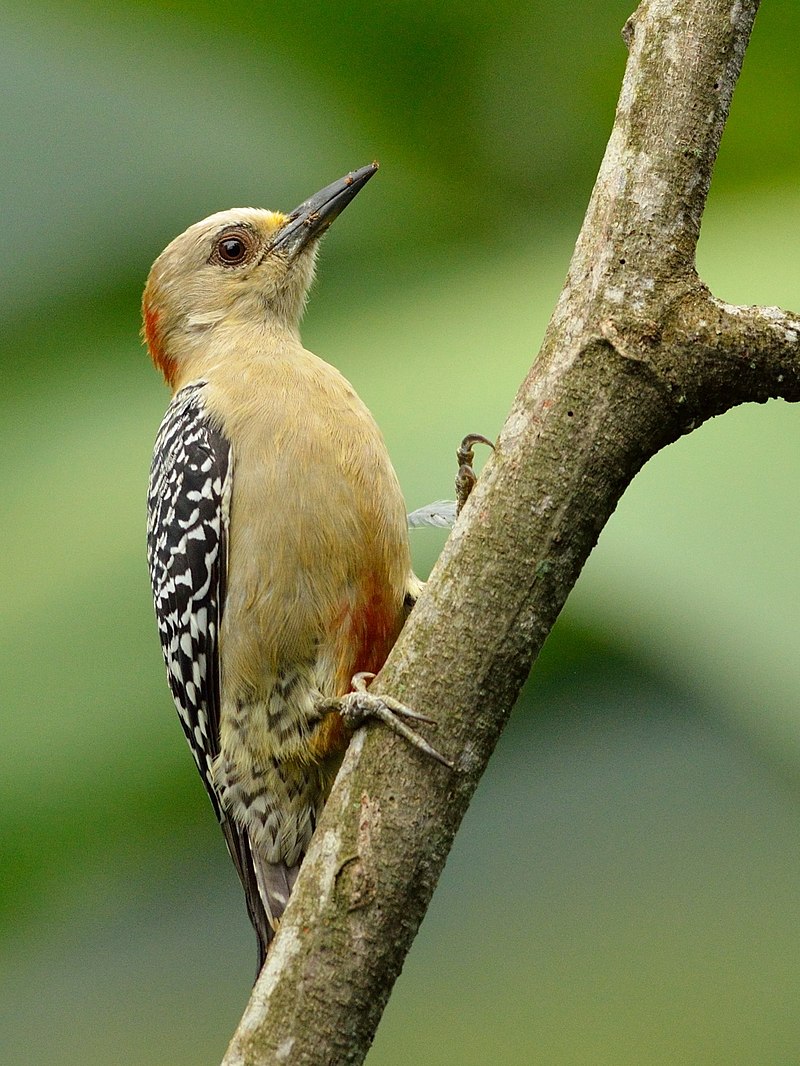
The red-crowned woodpecker is a striking bird, native to areas of Central and South America.
It measures 17 cm in length and weighs 55 g, with black and white zebra-barred wings and back contrasting against its pale buff brown underparts.
The most eye catching feature though is the male’s bright red crown, which has earned it its name.
This species prefers open forests or woodland edges where they can find their favourite food – insects hidden in dead tree trunks.
When not hunting for food these birds will often be seen drumming on trees as part of courtship rituals between males or as territorial displays towards other animals invading their territory.Scientific classification:
| Kingdom | Animalia |
| Phylum | Chordata |
| Class | Aves |
| Order | Piciformes |
| Family | Picidae |
| Genus | Melanerpes |
| Species | M. rubricapillus |
3. Vermilion Cardinal
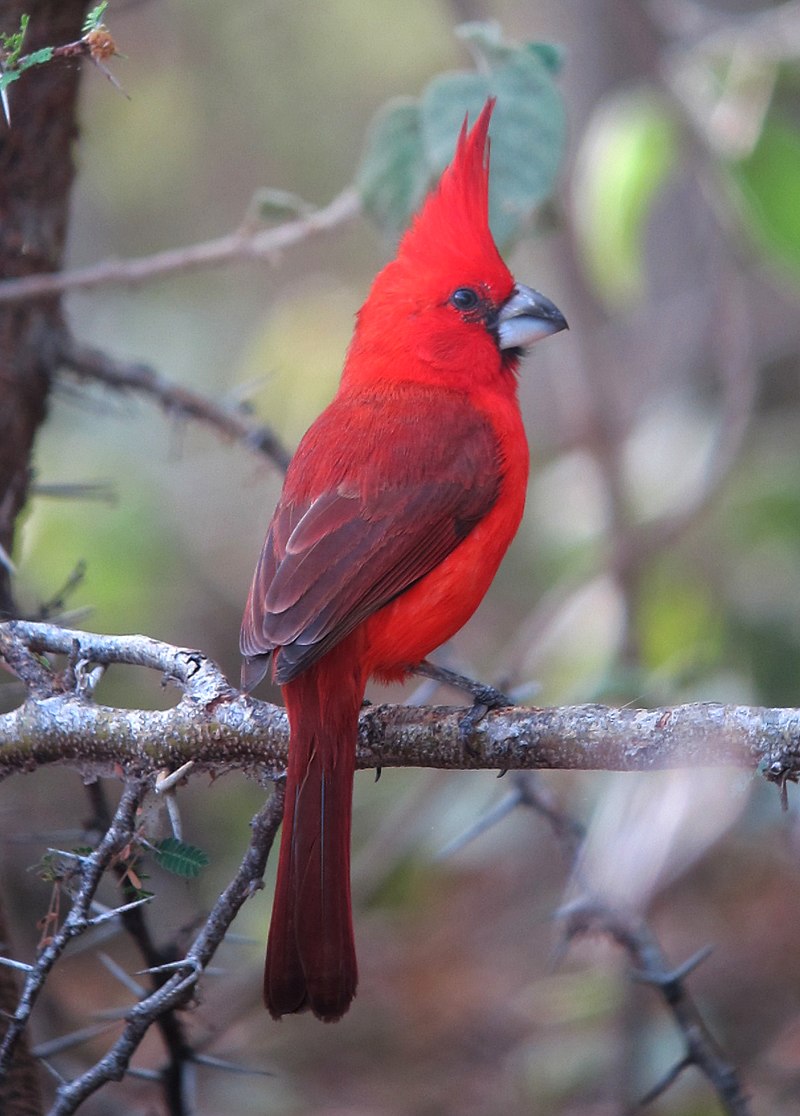
The Vermilion Cardinal is a species of bird that belongs to the family Cardinalidae, also known as cardinals or cardinal grosbeaks. This beautiful bird can be found in Colombia and Venezuela and is the only one of its kind.
It was previously placed in two other genera – Richmondena and Pyrrhuloxia- however it has since been established that it is more closely related to the latter.
The Vermillion Cardinals have a stunning plumage with vibrant red feathers on the head, wings, back and tail combined with black accents across their body which gives them an eye catching look.
Their diet consists mainly of insects but they are also known to feed on seeds when available too. These birds make lovely pets due to their intelligence but should be kept away from potential predators such as cats or hawks while out exploring outside.Scientific classification:
| Kingdom | Animalia |
| Phylum | Chordata |
| Class | Aves |
| Order | Passeriformes |
| Family | Cardinalidae |
| Genus | Cardinalis |
| Species | C. phoeniceus |
Also Featured In: Birds of Venezuela,
4. Yellow-Shouldered Amazon
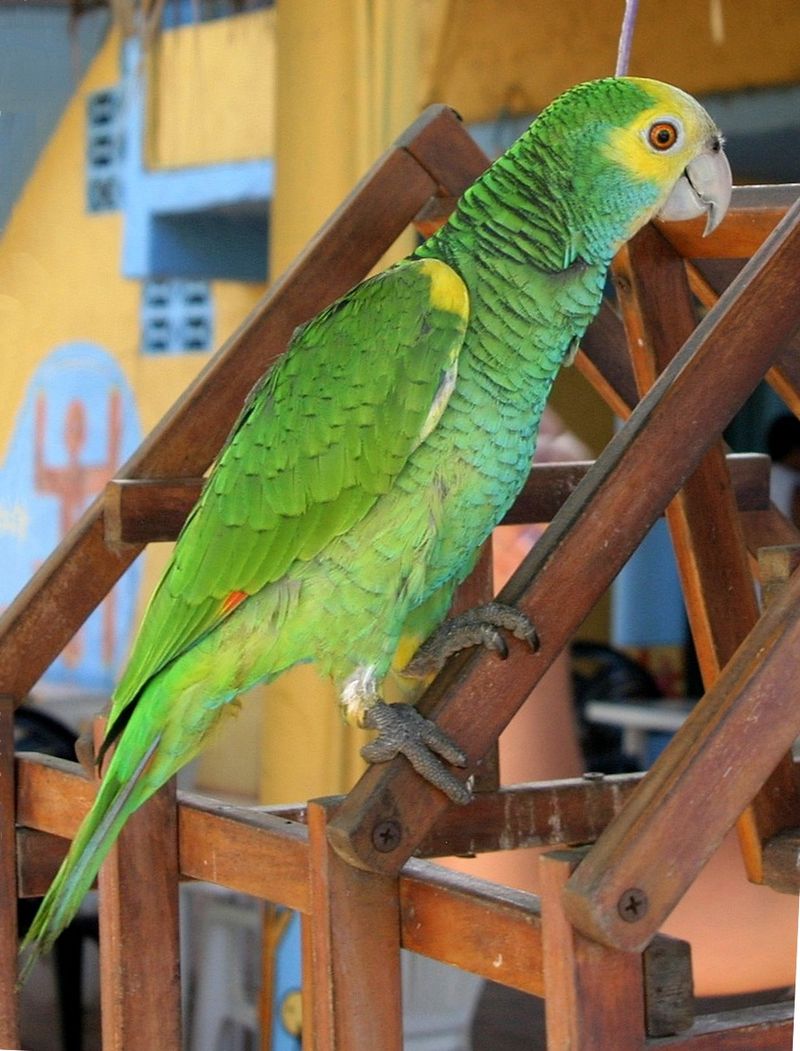
The Yellow-shouldered Amazon is a beautiful and unique bird species that can be found in South America and the Caribbean. As a member of the Psittacidae family, this bird is related to parrots and is a popular species among bird enthusiasts.
The bird has distinct physical features, including a whitish forehead, yellow crown, and ear coverts, a unique white eye-ring, and yellow thighs and bend of wings.
The bird’s primary flight feathers have broad dark blue tips, and a red wing-speculum, which makes it easy to identify. The species is mainly green, with a bluish tinge on its throat, cheeks, and belly, which gives it a beautiful appearance.
The Yellow-shouldered Amazon is known for its vocalizations and can be distinguished from other species by its unique physical features. Its diet consists of fruits, nuts, seeds, and berries, which are found in a range of habitats, including forests, savannas, and scrublands.
The species forms strong pair bonds and may mate for life. It typically lays 2-4 eggs in a clutch and incubates them for about a month. This bird’s breeding habits are vital to its survival as a species, and conservation efforts are underway to protect and preserve the Yellow-shouldered Amazon and its habitat.
Unfortunately, the Yellow-shouldered Amazon is currently classified as vulnerable due to habitat loss and poaching. These factors threaten the bird’s survival, making it crucial to implement conservation measures to protect its population.
The Yellow-shouldered Amazon is a unique and beautiful bird species found in South America and the Caribbean. Its physical features, vocalizations, and breeding habits make it a prized species among bird enthusiasts.
However, its vulnerability to habitat loss and poaching means that conservation efforts must continue to protect this species and ensure its survival for future generations.Scientific classification:
| Kingdom | Animalia |
| Phylum | Chordata |
| Class | Aves |
| Order | Psittaciformes |
| Family | Psittacidae |
| Genus | Amazona |
| Species | A. barbadensis |
5. Barred Antshrike
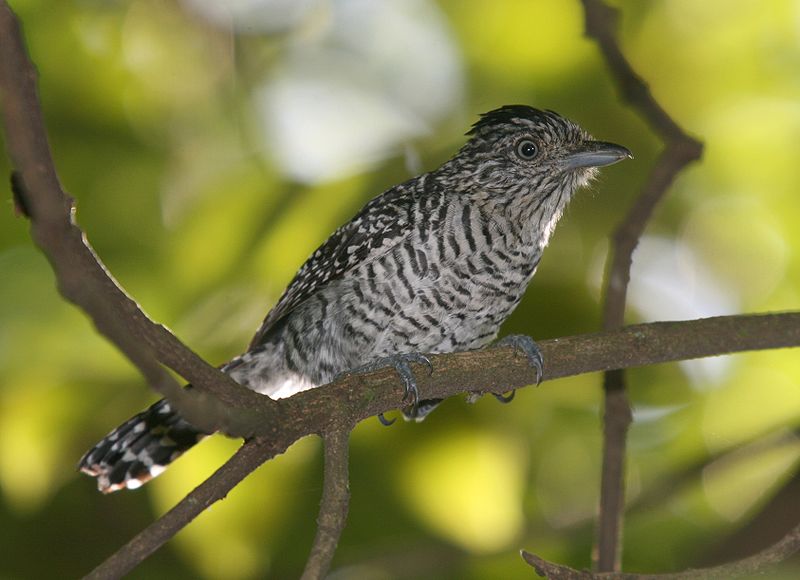
The Barred Antshrike is a beautiful bird belonging to the antbird family. It has an amazing range, being found in Mexico, Central America, Trinidad and Tobago as well as most of South America east of the Andes.
Even southern Texas has one accepted record. This small passerine can be spotted inhabiting wooded habitats that may consist of both dry and humid forests or even plantations with trees.
Its plumage consists mainly of black barring on its chestnut back along with white stripes on its wings giving it a unique look in flight.
Despite their shy nature they are quite vocal during breeding season when males sing from high perches for courtship displays; this is also when you’re likely to spot them at best.Scientific classification:
| Kingdom | Animalia |
| Phylum | Chordata |
| Class | Aves |
| Order | Passeriformes |
| Family | Thamnophilidae |
| Genus | Thamnophilus |
| Species | T. doliatus |
Also Featured In: Birds that You’ll Find in Chiapas,
6. Yellow Oriole
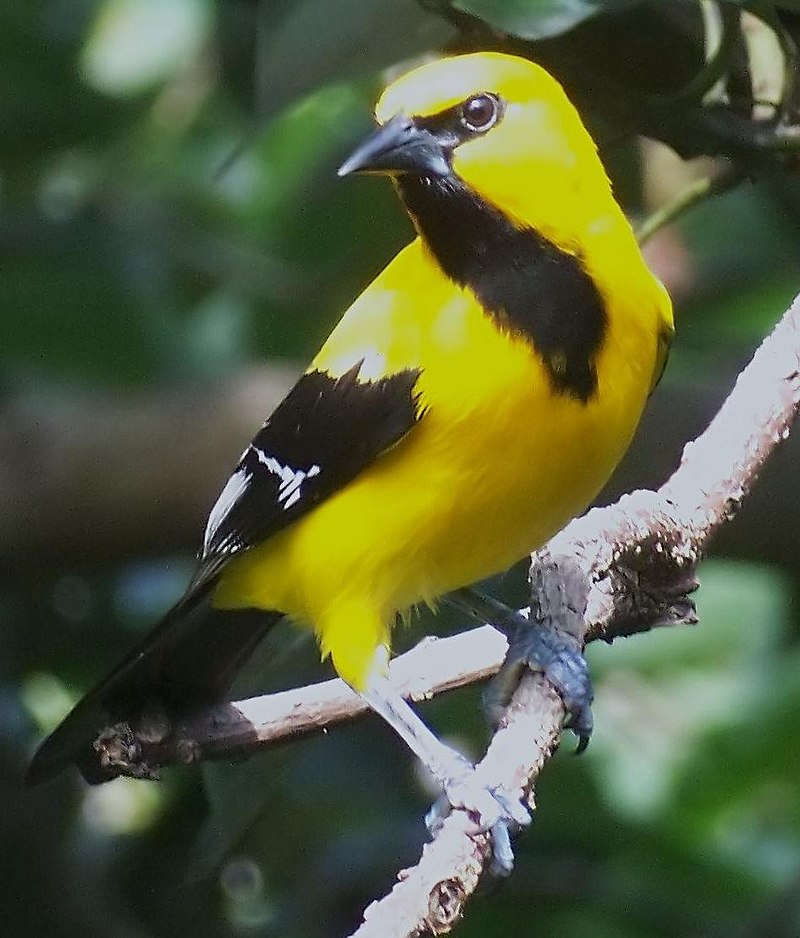
The Yellow Oriole is a beautiful passerine bird belonging to the Icteridae family. It has yellow feathers on its head, wings and back with black stripes running across them while it’s underparts are bright white in colour.
The adult male has an orange-yellow throat patch and females have grey throats.
They can be found breeding in northern South America where they inhabit dense woodland areas and open savanna habitats close to rivers or lakes.
Known as the Plantain Bird or Small Corn Bird by locals, these birds feed mainly on insects but will also consume fruits such as plantains and small corn grains for their diet. In Venezuela they’re known affectionately as ‘Gonzalito’.
A truly stunning species of wildlife worth keeping an eye out for when travelling through South America.Scientific classification:
| Kingdom | Animalia |
| Phylum | Chordata |
| Class | Aves |
| Order | Passeriformes |
| Family | Icteridae |
| Genus | Icterus |
| Species | I. nigrogularis |
Also Featured In: Trinidad and Tobago birds, Birds that Live in Guyana
7. Blue-Tailed Emerald
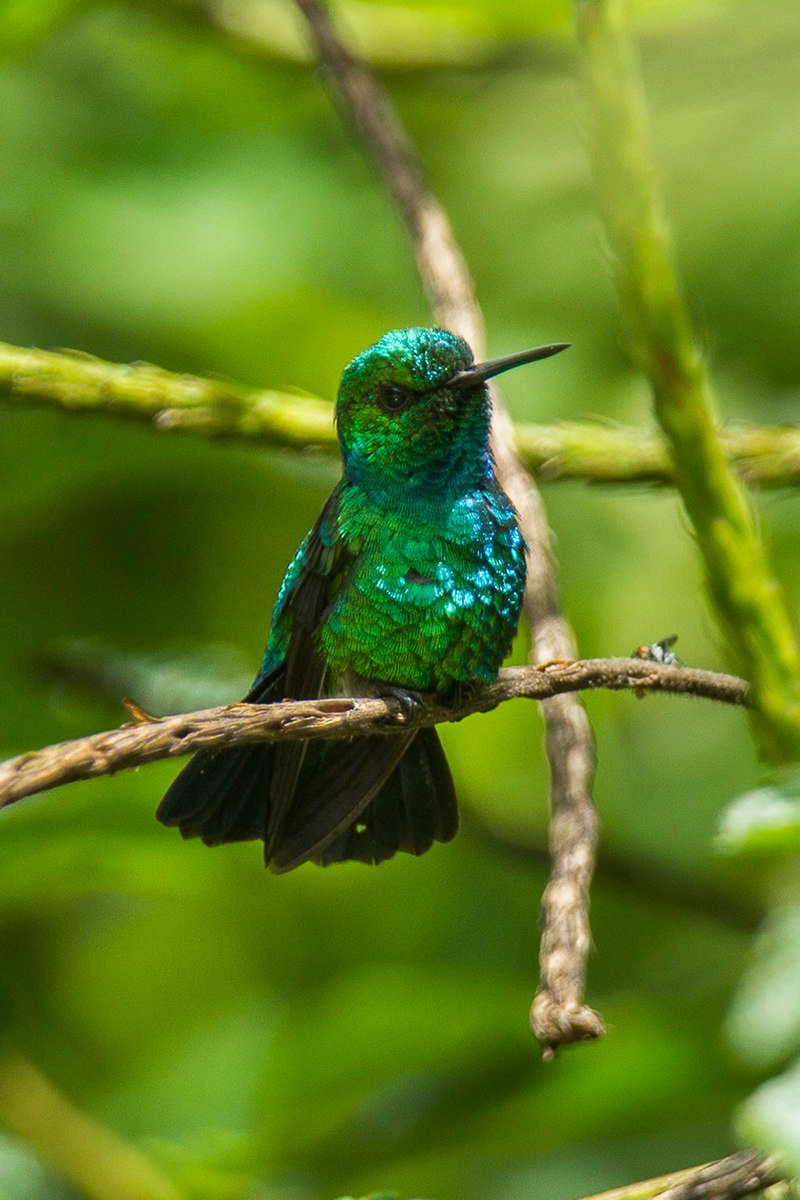
The Blue-tailed Emerald is a beautiful and vibrant hummingbird that is found in tropical and subtropical parts of South America. This species has bright green feathers, with the male having an iridescent blue tail.
These birds can be seen foraging among small flowers to collect nectar or catching insects on the wing. They are considered one of the smallest bird species, measuring at around 4 inches long from head to tail tip.
The Blue-tailed Emerald lives primarily east of the Andes Mountains from Colombia down through northern Bolivia and central Brazil, as well as Trinidad and other areas within its range such as Guianas.
It was first described by Swedish naturalist Carl Linnaeus in 1758 who noted its unique beauty compared to other birds.Scientific classification:
| Kingdom | Animalia |
| Phylum | Chordata |
| Class | Aves |
| Order | Apodiformes |
| Family | Trochilidae |
| Genus | Chlorostilbon |
| Species | C. mellisugus |
8. Black-Faced Grassquit
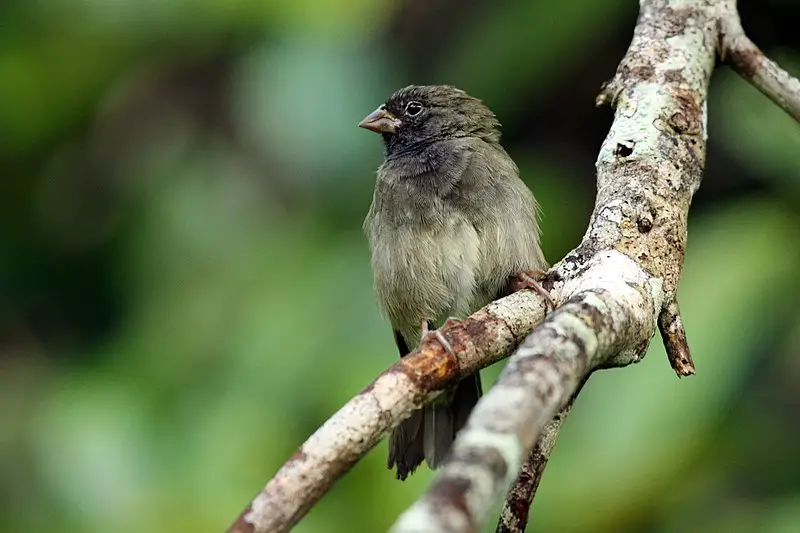
The Black-faced grassquit is a small bird belonging to the tanager family, genetically related to Darwin’s finches. It breeds mainly in the West Indies and along certain parts of Colombia and Venezuela.
The Swedish naturalist Carl Linnaeus first formally described it back in 1766 as part of his twelfth edition work on species classification.
This type of bird has a black head with white spots around its eyes, grey wings and tail feathers; its body is brownish orange or yellow with darker shades towards the belly area.
Its diet consists mostly of seeds from grasses but may also include other insects for additional nutrition during breeding season.Scientific classification:
| Kingdom | Animalia |
| Phylum | Chordata |
| Class | Aves |
| Order | Passeriformes |
| Family | Thraupidae |
| Genus | Melanospiza |
| Species | M. bicolor |
Also Featured In: Bahamas Birds, Birds that You’ll Find in Puerto Rico
9. Carib Grackle
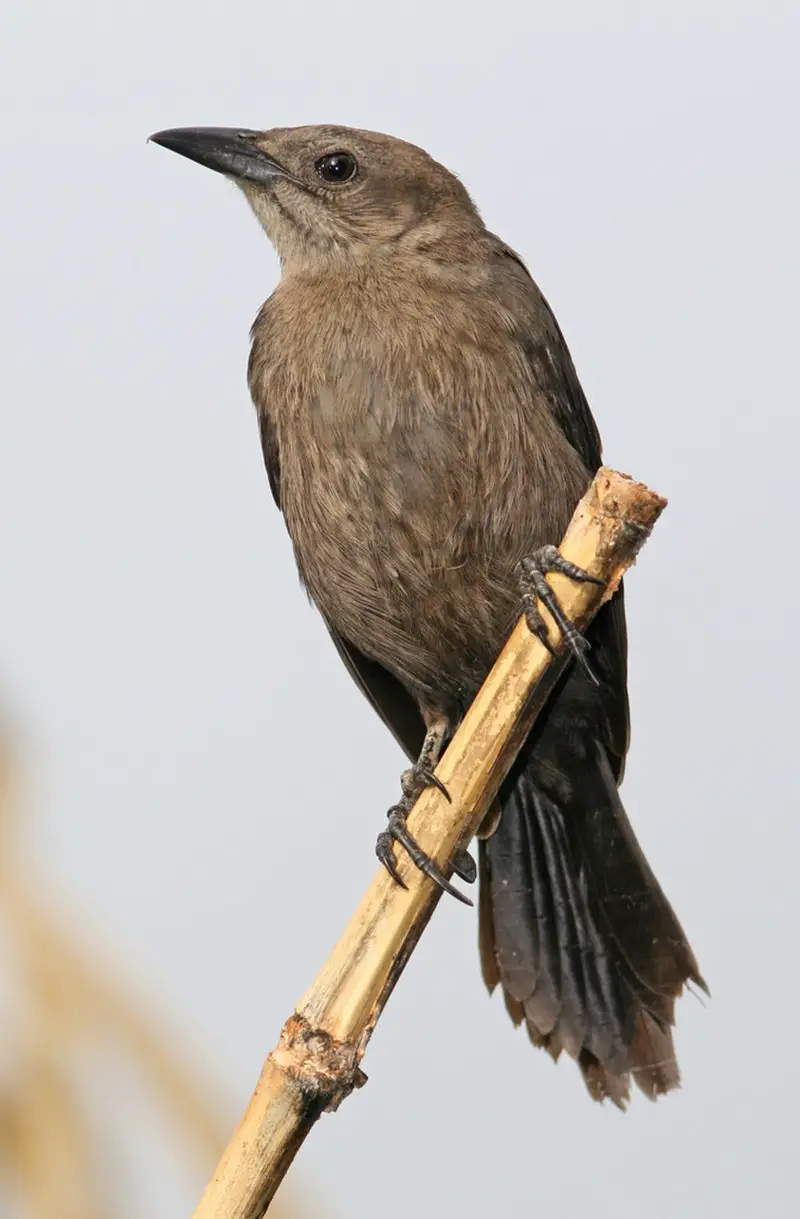
The Carib grackle is a tropical blackbird found in the Lesser Antilles and northern South America. It has eight subspecies, with the most widespread being Q. l. lugubris which can be found on Trinidad and much of mainland South America.
This particular subspecies was introduced to Puerto Rico during the 19th century where it now thrives due to its adaptability and tolerance towards human activity such as living near grazing animals or around farms.
Its diet consists mainly of small invertebrates, fruits, seeds and grains – all readily available in populated areas making it ideal for urban environments too.
They are also known for their beautiful songs used by males during breeding season to attract females but unfortunately this doesn’t last long as they generally only mate once throughout life before moving onto find another partner shortly after nesting season ends.Scientific classification:
| Kingdom | Animalia |
| Phylum | Chordata |
| Class | Aves |
| Order | Passeriformes |
| Family | Icteridae |
| Genus | Quiscalus |
| Species | Q. lugubris |
Also Featured In: Barbados Birds, Caribbean Birds
10. Collared Plover
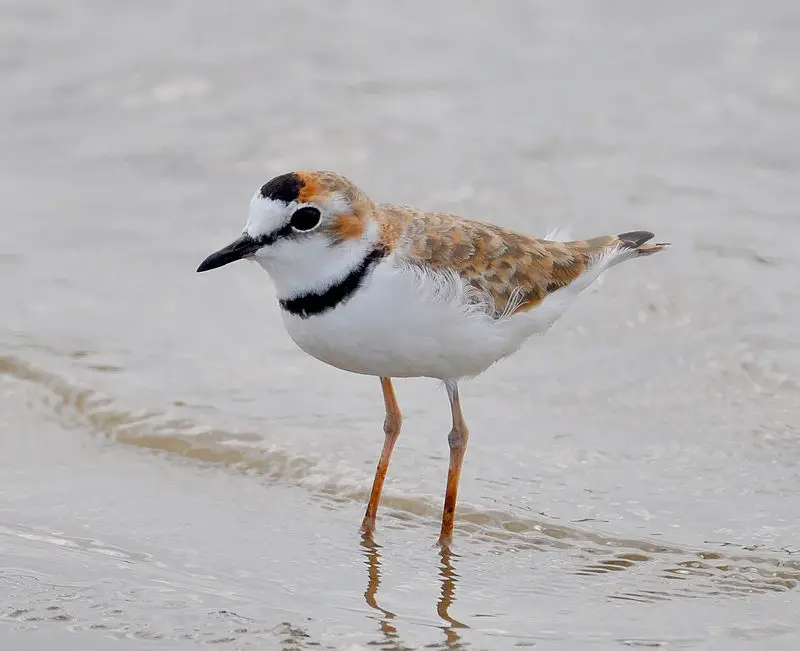
The Collared Plover is a small shorebird found along coasts and riverbanks of the tropical to temperate Americas, from central Mexico down to Chile and Argentina.
This plover measures 18 cm in length with an average weight of 35g; it has brown upperparts contrasting with white underparts all year round.
The adult plumage shows a black breast patch that can be seen clearly when they fly away or take off.
Although their population is decreasing due to habitat destruction, these birds have adapted well by learning how to live near human settlements where food sources are more plentiful.
They feed on insects, larvae, worms and other invertebrates while searching for them among mudflats, beaches or riversides.Scientific classification:
| Kingdom | Animalia |
| Phylum | Chordata |
| Class | Aves |
| Order | Charadriiformes |
| Family | Charadriidae |
| Genus | Charadrius |
| Species | C. collaris |
Also Featured In: Common Birds of Guerrero, Most Common Oaxaca Birds
11. Buffy Hummingbird
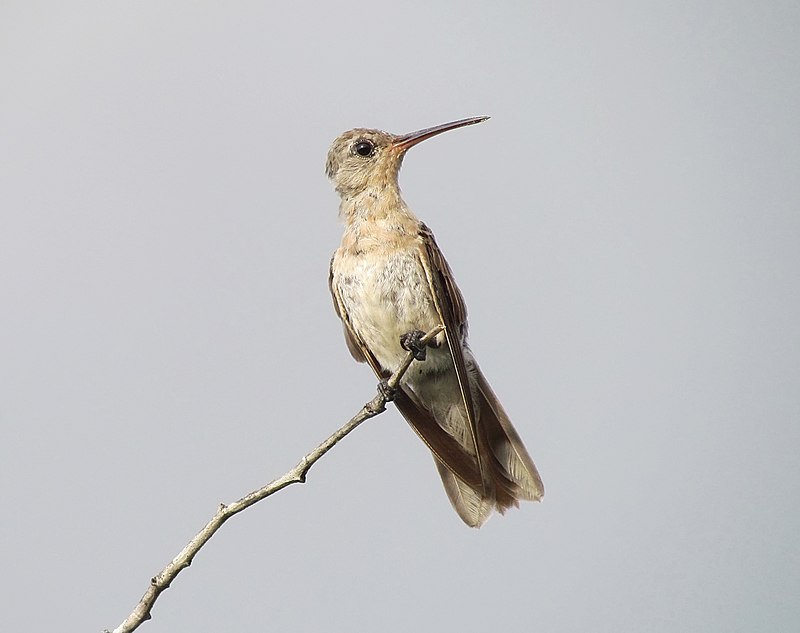
The Buffy hummingbird, a unique species in the Trochilidae family, is found in the dry forests and scrublands of northern South America. This tiny bird feeds on insects, nectar, flesh, and juice of cactus fruits.
While both males and females look similar, the female buffy hummingbird is slightly smaller than the male. Its unique features and feeding habits make it an important part of the ecosystem it inhabits.Scientific classification:
| Kingdom | Animalia |
| Phylum | Chordata |
| Class | Aves |
| Clade | Strisores |
| Order | Apodiformes |
| Family | Trochilidae |
| Tribe | Trochilini |
| Genus | Leucippus Bonaparte, 1850 |
| Species | L. fallax |
12. Scaled Dove
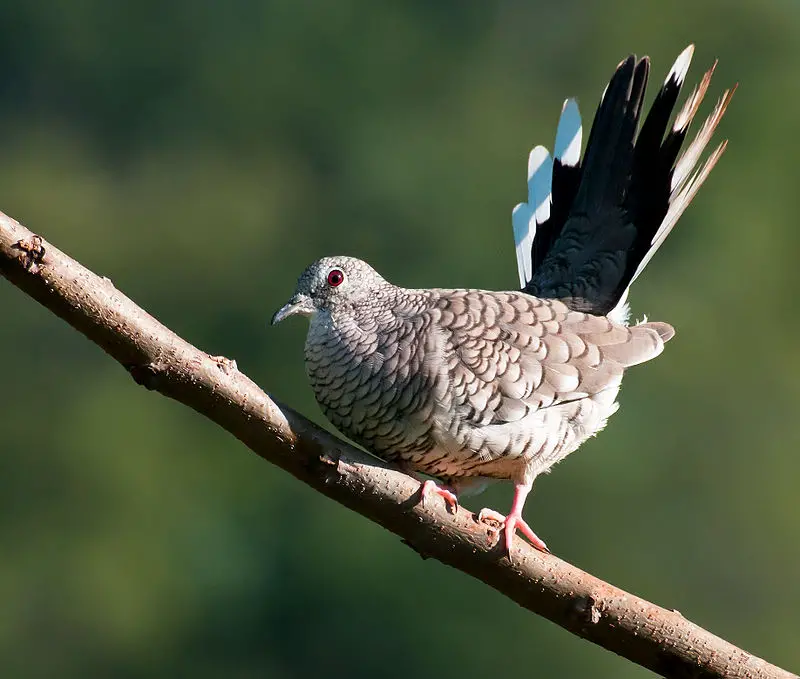
The Scaled Dove, also known as the Scaly Dove, Ridgway’s Dove, Mottled Dove, and South American Zebra Dove, is a bird found in various South American countries including Brazil, Bolivia, and Argentina.
They inhabit subtropical or tropical dry shrubland and seasonally wet or flooded lowlands. Their distinct markings give them a unique appearance, with finely scaled feathers covering their entire body.
They are small in size and have short, stout beaks ideal for eating seeds and grains.
The Scaled Dove is a social bird that feeds and travels in pairs or small flocks. They build shallow nests made of twigs and lay small, white eggs.
Overall, this bird is a fascinating species that contributes to the diversity of South American birdlife.Scientific classification:
| Kingdom | Animalia |
| Phylum | Chordata |
| Class | Aves |
| Order | Columbiformes |
| Family | Columbidae |
| Genus | Columbina |
| Species | C. squammata |
13. Glaucous Tanager
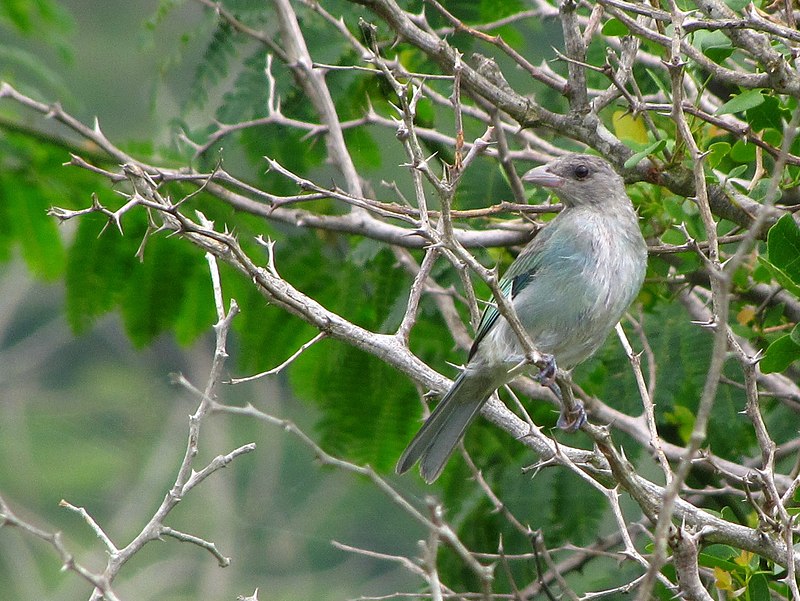
The Glaucous tanager is a bird species belonging to the Thraupidae family. Its name comes from the term “glaucous”, which describes its coloration.
Found in Venezuela and Colombia, this bird inhabits heavily degraded former forest areas and subtropical or tropical moist lowland forests.
Despite its bright and attractive plumage, little is known about this bird’s behavior and life history. Research into the species is limited, and conservation efforts are necessary to preserve its natural habitats in South America.
The Glaucous tanager is a fascinating bird species that provides important ecosystem services, and researchers are keen to learn more about this lovely and elusive bird.Scientific classification:
| Kingdom | Animalia |
| Phylum | Chordata |
| Class | Aves |
| Order | Passeriformes |
| Family | Thraupidae |
| Genus | Thraupis |
| Species | T. glaucocolpa |